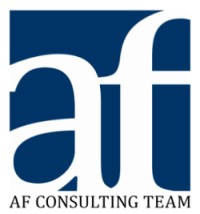Cash flow isn’t just the money in the bank—it represents both the movement of money in, as well as out of a company. That means it encompasses revenue and expenses (and so much more). So that being said, understanding where your money is, what it’s doing, and where it’s going is so important in assessing your financial reports.
If you don’t regularly look at your cash flow statements, balance sheets, income statements, etc., then you might not actually know what’s going on in your business, making the idea of cash flows a bit confusing.
But regardless of your comprehension of the inner workings of your company financials, everyone can understand the bottom line. Positive cash flow means money is coming in and your business can grow. Negative cash flow means, well, that something needs to change.
What can you do, right now, to address a negative cash flow? Let’s take a look at seven simple (and practical) strategies to boost your cash flow:
1. Streamline invoicing. You can’t get paid if you don’t tell your customers they owe you. Sending out your invoices as quickly as possible (and getting your clients to pay them in a timely manner) can make all the difference in your month-to-month cash flow.
Now, I know getting people to pay is easier said than done, but by providing easier ways to accept payment (like online invoices through Quickbooks, Freshbooks, or Xero) you increase your chances. And in a pinch, you can also send follow-up reminders, or even late penalty fees (I know, I hate those, but so do most people, so it might turn out in your favor).
2. Cut expenses. Obviously, the less money going out, the lower the negative cash flow. When you are trying to address cash flow issues, it’s important to reevaluate all your operating expenses. Just like your budget at home, your company budget must take into account the essentials and the fluff.
Generally speaking, if you are debating whether or not something is essential, it probably isn’t. Essential things are stuff like rent, electricity, internet, and payroll. A coffee bar can feel essential at 6am, but it’s not actually integral to your business functionality. Sad, but true. If you need some help, try asking yourself, “is this expense absolutely necessary for the running of this business?” and “Even if this item is essential, is there a cheaper option?”
So maybe you deem coffee as an essential item, but maybe you don’t need to pay for Starbucks every morning. Get the idea? If you are looking for more ways to save, check out my blog on 10 Ways to Cut Costs in Your Small Business.
3. Increase prices. I know this isn’t exactly a fun option, but in cash flow situations, it’s always a good idea to assess your pricing structure. Are you charging too much for some items and not enough for others? Do your prices reflect your target market? What are your competitors charging? And the most important question: are you charging for your time/worth value and for what you actually need to charge? Sometimes in an effort to beat out the competition, we actually undervalue our goods and services, decreasing or eliminating our profit margins and turning off our ideal clients. It’s something to think about.
4. Ditch your inventory. If you sell retail, then you know what it feels like to hold onto old inventory. Not only is it a big expense in the first place, but inventory that won’t move takes up space, physically and energetically. It’s one of those classic Catch-22s—you need money to buy inventory, but you need inventory to make money.
Take a look at the products you sell. Is there something that needs to go? Even if you take a bit of a loss, any money coming in is better than holding onto something that is never going to sell at a profit. Cut your losses and take the cash.
5. Expand your market. Sometimes you need to think outside of the box a little. Can you add any new products or services? Can you add on a service that you then outsource (think adding an option for mobile IV stations for an afterparty, or at-home car detailing option for your regular cleaning services). Do you need to consider any recent events and offer new take-out or contactless options? Or maybe you can reach out to new strategic alliances and target a market that might not be aware of you (like yoga for Crossfitters or combining Pilates with Chiropractic or Physical Therapy).
6. Reach out to existing clients. Your existing clients are already your biggest fans, so why not reach out to them? From incentive and referral programs and stamp cards to popular bundled options, and more, your current clients are your number one resource and audience (just don’t take advantage of that fact).
7. Consider bank accounts and credit cards. I know, I know, these are not the ideal and certainly not glamorous, but short of applying for a loan or grant to increase your working capital, these two factors may be worth a look. If you don’t already have a business savings account where you earn money (though usually a very small amount) on interest, you may want to open one. This can create a small cushion of extra cash for your business.
Another option is a cash back business credit card. If utilized strategically, this is easy money. But if you aren’t the best at managing your credit, skip this option entirely.
The bottom line is your bottom line and all of these strategies can help you manage and even increase your overall cash flow, whether you implement one or all of these tips. If you are looking to gain further knowledge on how your business books work, don’t miss my blog on Understanding Your Business by the Numbers.

